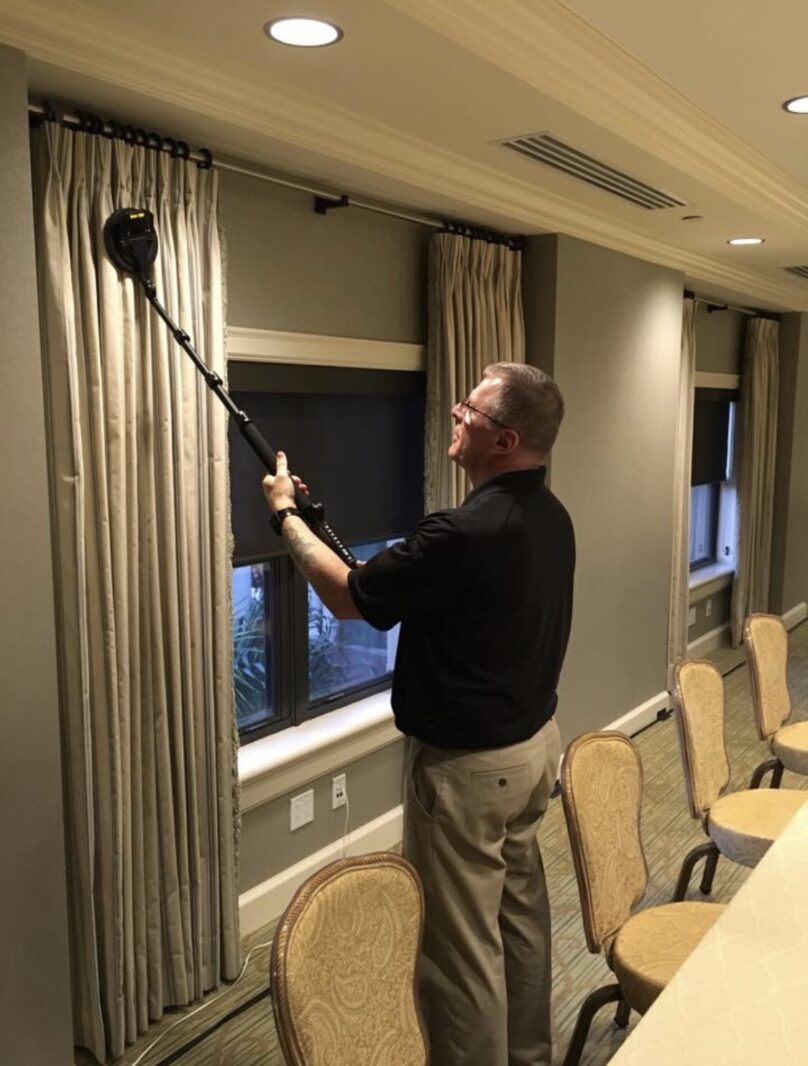How to Conduct a Basic TSCM Bug Sweep

Conducting a Technical Surveillance Countermeasures (TSCM) sweep is a complex and specialized process that involves the detection and mitigation of electronic eavesdropping devices. Here is a simplified procedure for conducting a basic TSCM sweep, but please note that professional TSCM experts typically undergo extensive training and use specialized equipment.
Basic TSCM Bug Sweep Procedure:
1. Preparation:
– Gather necessary equipment, such as TSCM detection devices (spectrum analyzers, RF signal detectors, thermal cameras), tools, and personal protective equipment.
– Review any available information about the area or individuals of concern.
– Plan the sweep, including the areas to be inspected and the order of inspection.
2. Team Formation:
– Assemble a team of trained TSCM professionals. A team is often necessary for a thorough sweep.
3. Initial Sweep:
– Begin with a broad initial sweep of the area using RF signal detectors and spectrum analyzers to identify any unusual or unauthorized radio frequencies or signals.
– Document any findings, including signal strengths and frequencies.
4. Physical Inspection:
– Physically inspect the area for hidden devices. This includes examining walls, ceilings, floors, furniture, and any electronic equipment.
– Look for signs of tampering, unusual wiring, or unexplained anomalies.
5. Communication Systems Inspection:
– Inspect communication systems, such as phones, fax machines, and computers, for any suspicious modifications or unauthorized devices.
6. Environmental Factors:
– Use thermal imaging cameras to detect heat signatures that might indicate hidden devices.
– Check for unusual sound or vibration sources.
7. Data and Information Security:
– Review data security protocols and check for any breaches or unauthorized access.
8. Documentation:
– Thoroughly document all findings, including photographs and notes.
9. Mitigation:
– If any electronic eavesdropping devices are found, take appropriate steps to mitigate the threat, which may include removing or disabling the devices, or informing law enforcement.
10. Final Checks and Verification:
– Verify that any identified threats have been properly addressed and everything js reset properly.
11. Reporting:
– Prepare a detailed TSCM report outlining the sweep’s findings, actions taken, and recommendations for ongoing security measures.
– Share the report with the relevant parties, such as the organization’s security team or management.
12. Follow-Up:
– Implement any recommended security measures to prevent future breaches.
– Periodically conduct TSCM sweeps as part of your organization’s security protocol.
It’s essential to note that a comprehensive TSCM sweep is a highly specialized task, often carried out by trained professionals who have access to advanced equipment and techniques. If you suspect your organization is at risk of electronic eavesdropping, consider hiring a qualified TSCM expert or consultancy to conduct the sweep.
Learn more about our TSCM / Bug Sweep services here: https://www.lasorsa.com/tscm-bug-sweeps/
For more info on our TSCM Course: https://www.lasorsa.com/technical-surveillance-counter-measures-course/
